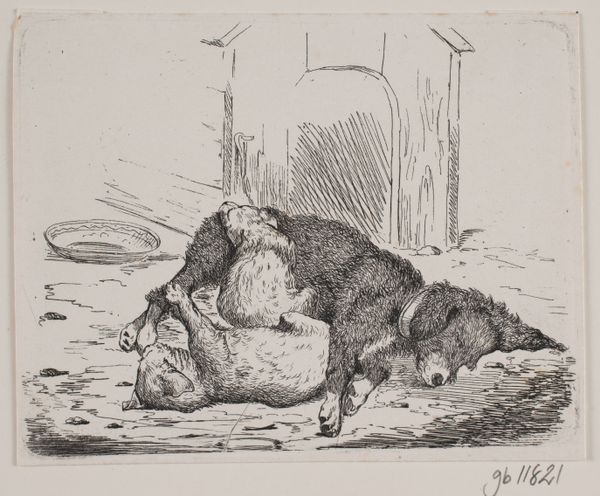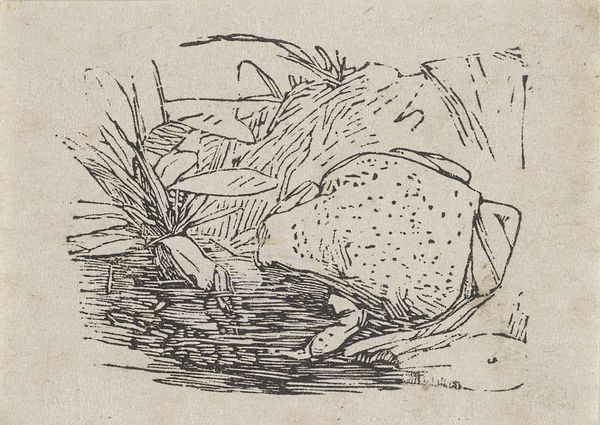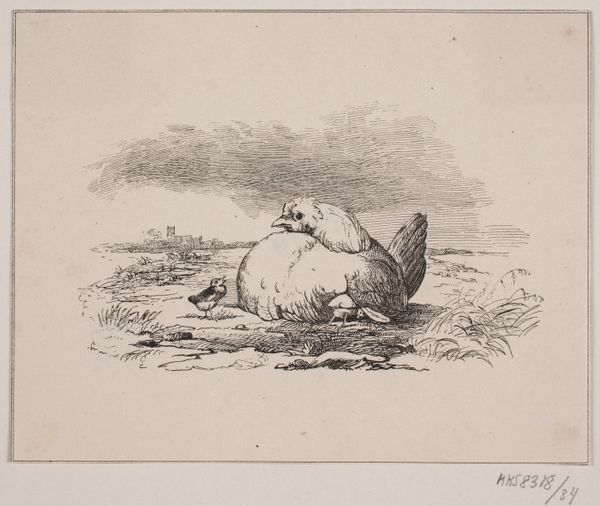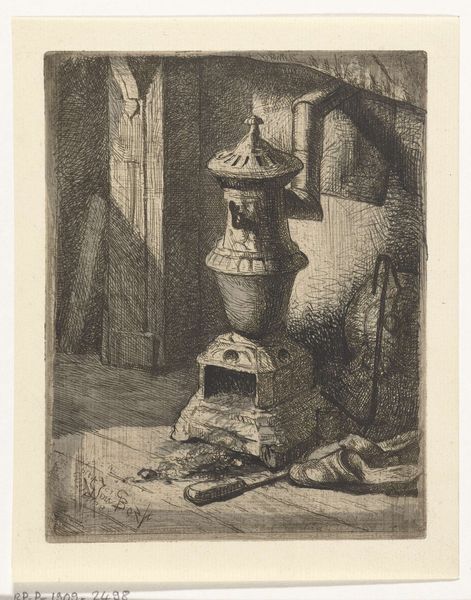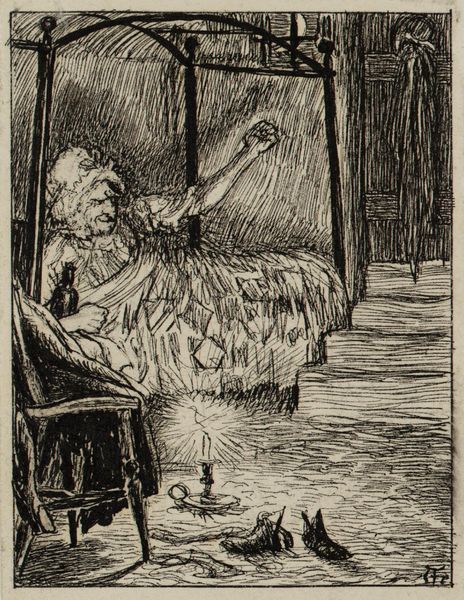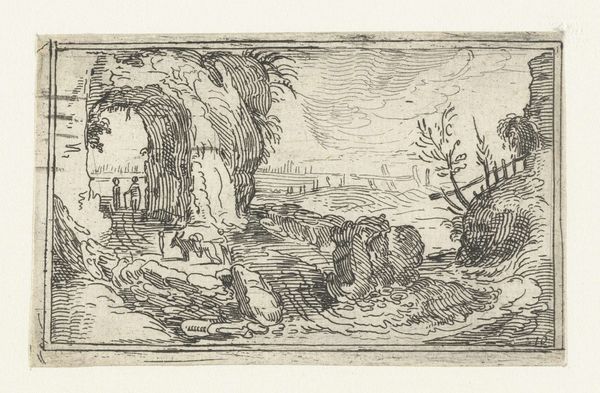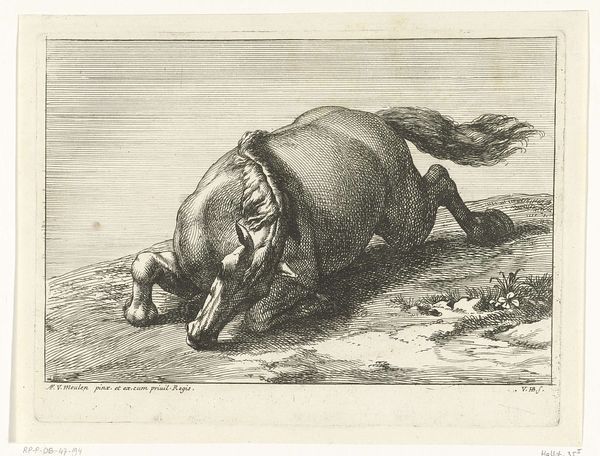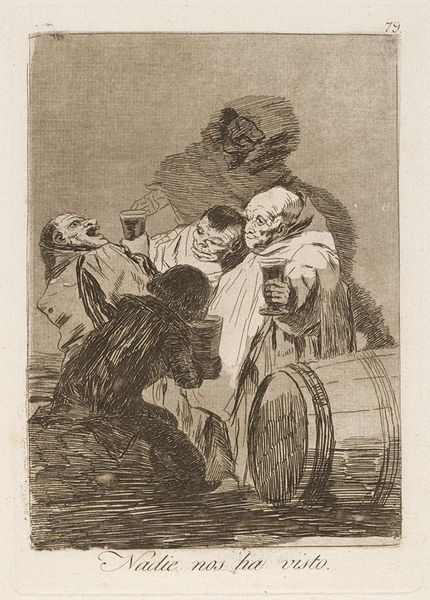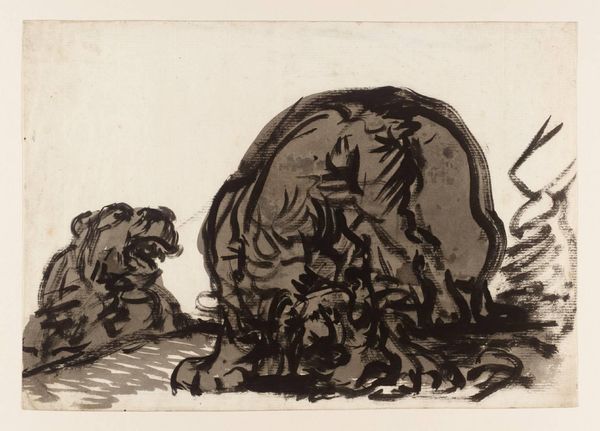
drawing, ink, pen
#
drawing
#
narrative-art
#
pen illustration
#
pen sketch
#
figuration
#
ink
#
pen-ink sketch
#
pen work
#
pen
#
modernism
Dimensions: height 101 mm, width 153 mm
Copyright: Rijks Museum: Open Domain
Curator: Welcome. We're standing before Leo Gestel's "Liggende man die een bom aansteekt," or "Lying Man Lighting a Bomb," created between 1934 and 1936. Gestel rendered this intriguing image with pen and ink on paper. Editor: The first thing that strikes me is its intensity, even within such stark lines. The sharp contrast and confined space create a feeling of anxiety, a sense of imminent danger. The figure seems consumed, almost entombed, by the act itself. Curator: I agree. This piece speaks to a period fraught with social and political tension, both in Europe and Gestel's native Netherlands. It's impossible to separate the rising tide of fascism and pre-war anxieties from the piece's potential meaning. The isolated figure and the act of violence can be read as both a resistance and a desperate act of destruction. Editor: I see that, definitely. But beyond the immediate socio-political reading, the act of lighting the bomb feels like a potent symbol. Fire, bombs…these are transformative but destructive forces. The man almost merges with this symbol, suggesting a self-destructive urge or a necessary, even purging action within society. Curator: It's a potent convergence of inner turmoil and exterior realities, for sure. There’s something unsettling about how deliberate the figure is. And notice the architectural detail next to the figure. Is this suggesting an old power structure under threat? It definitely contextualizes the potential significance of the action. Editor: Exactly. The classical reference point adds to it. I mean the very shape of the bomb is traditional; an archaic form of threat updated to Gestel's era, continuing the cultural association between violence and uprising. The man is lying, perhaps fallen or lying in wait: but either way the classical tradition, personified here, faces an ominous end. Curator: Gestel clearly invites us to question the cost and motivations behind violent upheaval. Editor: Indeed. What resonates is that the man isn’t portrayed heroically. It is a solemn action of the individual in the face of a foreboding circumstance. Curator: Thinking about our discussion, I am reminded again that history paints our present as much as it illuminates the past. Editor: For me, I'll continue to contemplate those universal and destructive energies, and the strange allure and dread they hold.
Comments
No comments
Be the first to comment and join the conversation on the ultimate creative platform.
